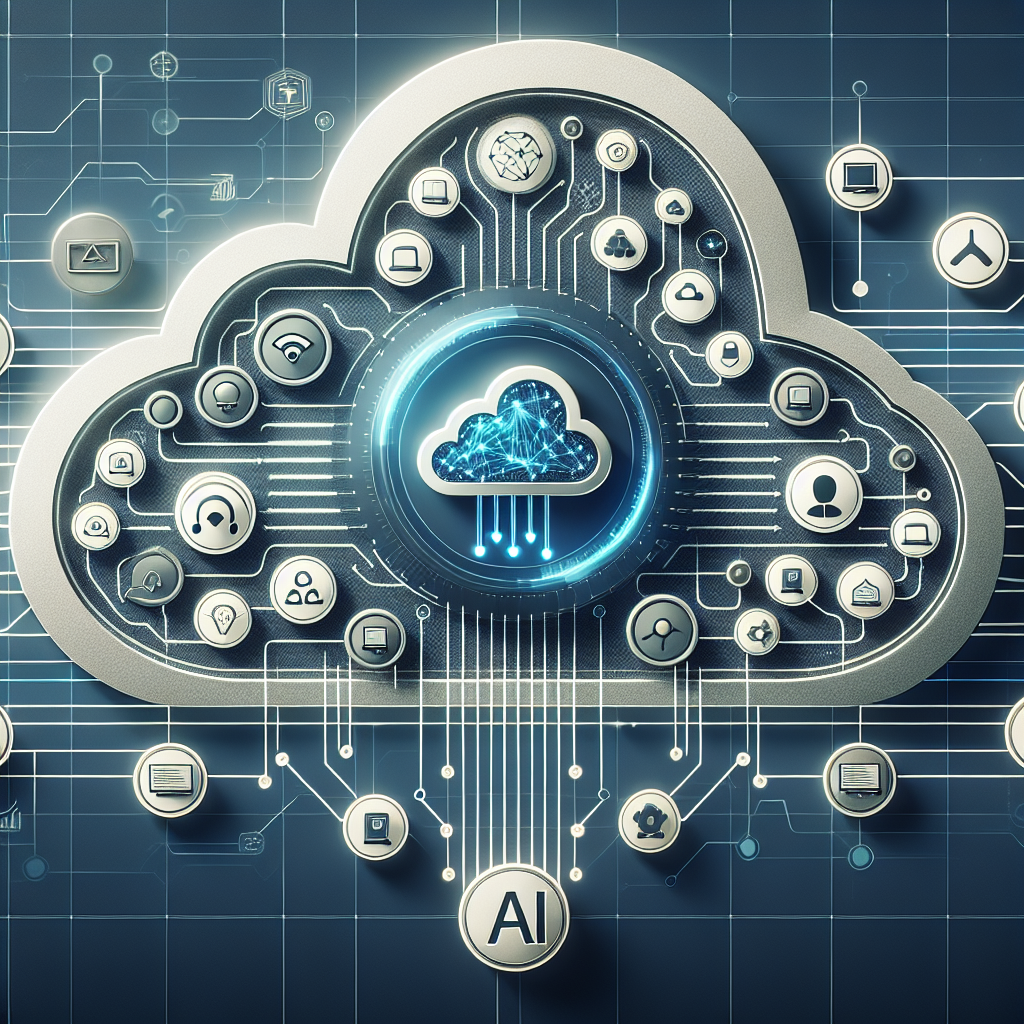The Future of Cloud Computing: AI-Driven Service Delivery Optimization
Cloud computing has revolutionized the way organizations store, manage, and access data and applications. With the rise of artificial intelligence (AI), the future of cloud computing is being shaped by the integration of AI-driven service delivery optimization. This combination of AI and cloud computing promises to enhance performance, efficiency, and security in ways previously unimaginable.
AI-driven service delivery optimization refers to the use of AI algorithms and machine learning techniques to automate and improve the delivery of cloud services. By analyzing vast amounts of data in real-time, AI can identify patterns, predict trends, and make intelligent decisions to optimize service delivery. This results in faster response times, better resource allocation, and lower costs for organizations using cloud services.
One of the key benefits of AI-driven service delivery optimization is improved performance. AI algorithms can analyze data from various sources, such as network traffic, server logs, and user behavior, to identify bottlenecks and optimize performance. This can result in faster load times, reduced latency, and improved overall user experience.
Additionally, AI can help organizations better allocate resources in the cloud. By analyzing usage patterns and predicting future demand, AI algorithms can dynamically adjust resource allocation to ensure optimal performance and cost efficiency. This can help organizations save money by only paying for the resources they need, when they need them.
Another important aspect of AI-driven service delivery optimization is enhanced security. AI algorithms can analyze network traffic and detect anomalies that may indicate a security threat. By automatically flagging and responding to potential threats, AI can help organizations prevent data breaches and other security incidents.
In addition to performance, efficiency, and security, AI-driven service delivery optimization can also help organizations improve scalability and flexibility. By automating routine tasks and optimizing resource allocation, AI can help organizations quickly scale up or down as needed, without manual intervention. This can be particularly valuable for organizations with fluctuating workloads or seasonal demands.
Overall, the integration of AI-driven service delivery optimization promises to transform the way organizations use cloud computing. By leveraging AI algorithms to automate and optimize service delivery, organizations can achieve higher performance, lower costs, and improved security. This will enable organizations to stay competitive in an increasingly digital and data-driven world.
FAQs:
Q: What is AI-driven service delivery optimization?
A: AI-driven service delivery optimization refers to the use of AI algorithms and machine learning techniques to automate and improve the delivery of cloud services. By analyzing data in real-time, AI can optimize performance, resource allocation, and security in the cloud.
Q: How does AI-driven service delivery optimization improve performance?
A: AI algorithms can analyze data from various sources to identify bottlenecks and optimize performance. This can result in faster load times, reduced latency, and improved overall user experience.
Q: How does AI-driven service delivery optimization enhance security?
A: AI algorithms can analyze network traffic and detect anomalies that may indicate a security threat. By automatically flagging and responding to potential threats, AI can help organizations prevent data breaches and other security incidents.
Q: How does AI-driven service delivery optimization improve efficiency?
A: AI algorithms can analyze usage patterns and predict future demand to dynamically adjust resource allocation. This can help organizations save money by only paying for the resources they need, when they need them.
Q: How does AI-driven service delivery optimization enhance scalability and flexibility?
A: By automating routine tasks and optimizing resource allocation, AI can help organizations quickly scale up or down as needed, without manual intervention. This can be particularly valuable for organizations with fluctuating workloads or seasonal demands.
Q: What are the benefits of AI-driven service delivery optimization?
A: The benefits of AI-driven service delivery optimization include improved performance, efficiency, security, scalability, and flexibility. By leveraging AI algorithms to optimize service delivery, organizations can achieve higher performance, lower costs, and improved security in the cloud.

